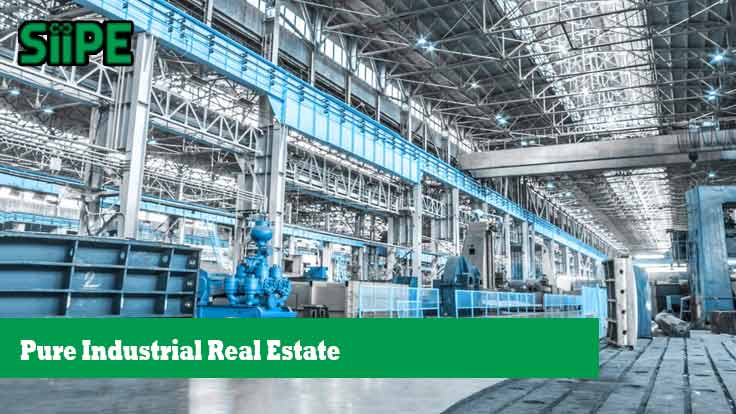The rapid evolution of global supply chains, e-commerce, and manufacturing demands has placed industrial real estate at the center of economic development. Among the many types of industrial properties, pure industrial real estate stands out as a key driver in shaping modern industrial parks. Unlike mixed-use developments, pure industrial real estate focuses solely on supporting industrial operations, such as logistics, warehousing, manufacturing, and distribution.
In this article, we explore how this property segment plays a pivotal role in the efficiency, sustainability, and competitiveness of industrial zones, particularly in emerging markets like Indonesia.
What Is Pure Industrial Real Estate?
Pure industrial real estate refers to land and facilities that are designed, built, and managed exclusively for industrial activities. This includes:
-
Warehouses and distribution centers
-
Manufacturing plants
-
Cold storage facilities
-
R&D and industrial labs
-
Infrastructure support buildings (utility hubs, maintenance, etc.)
Unlike commercial or mixed-use estates, pure industrial zones are strategically located near transport infrastructure such as ports, toll roads, and logistics corridors to optimize the flow of goods and raw materials.
Key Benefits of Pure Industrial Real Estate
1. Operational Efficiency
Pure industrial spaces are tailored to the unique needs of manufacturers and logistics operators. High ceilings, wide floor spans, and efficient loading docks enhance productivity and reduce handling costs.
2. Custom-Built Infrastructure
Tenants can benefit from purpose-built facilities equipped with the latest technologies, such as automated racking systems, smart sensors, and energy-efficient installations.
3. Strategic Location
Most pure industrial parks are developed in strategic economic zones close to export hubs, major highways, and railways — accelerating time-to-market.
4. Cost Optimization
By focusing on industrial tenants, developers can reduce overhead costs, lower land use conflicts, and offer competitive lease rates compared to mixed-use or retail-based areas.
The Role of Pure Industrial Real Estate in Modern Industrial Park Development
1. Enabling Specialized Industrial Clusters
Pure industrial estates make it easier for governments and private developers to support sector-based clustering. For example:
-
Automotive clusters
-
Textile and apparel hubs
-
Electronics manufacturing zones
By grouping similar industries, industrial parks benefit from shared logistics, supplier networks, and workforce specialization.
2. Facilitating Public-Private Partnerships (PPP)
Many modern industrial parks are built through PPP models, where private developers manage real estate while governments provide incentives and infrastructure. Pure industrial real estate provides a clear, investment-focused foundation for such partnerships.
3. Improving Environmental Sustainability
Modern industrial real estate often includes eco-industrial principles:
-
Green building standards (LEED, EDGE)
-
Renewable energy sources (solar rooftops)
-
Wastewater recycling systems
These elements help reduce the environmental footprint of industrial parks and meet ESG (Environmental, Social, Governance) requirements for international tenants.
4. Supporting Digital Transformation
Pure industrial zones are increasingly equipped with smart infrastructure such as:
-
IoT-based facility management
-
Real-time logistics tracking
-
Automated security systems
This digitization enhances competitiveness and supports Industry 4.0 integration.
Case Study: Indonesia’s Push for Industrial Real Estate Growth
Indonesia, as Southeast Asia’s largest economy, is actively promoting industrial zones to attract foreign direct investment (FDI). Government initiatives like SIIPE (Surabaya Industrial Estate Rungkut) and other industrial parks in West Java, Batam, and North Sumatra showcase the growing role of pure industrial developments.
These estates offer:
-
Ready-built factories and warehouses
-
Access to skilled labor
-
Regulatory support and licensing ease
-
Proximity to export ports and infrastructure
As the country aims to become a regional manufacturing hub, pure industrial real estate plays a central role in providing scalable, investment-ready platforms for growth.
Challenges in Developing Pure Industrial Real Estate
While the benefits are clear, several challenges remain:
1. Land Acquisition and Zoning
Securing industrial-zoned land that meets regulatory and environmental standards can be complex and time-consuming.
2. Infrastructure Gaps
Industrial areas require robust infrastructure – power, water, telecom, roads – which may be lacking in rural or less-developed regions.
3. Capital Investment
Pure industrial developments often demand significant upfront investment in construction, compliance, and utility integration.
However, despite these challenges, developers and investors continue to see strong ROI due to high tenant retention, long lease durations, and growing industrial demand.
The Future of Pure Industrial Real Estate
Looking ahead, several trends are likely to shape the future:
🔹 Rise of E-Commerce Logistics Hubs
As online shopping continues to grow, logistics hubs will demand more high-spec warehousing space in pure industrial zones.
🔹 Sustainability and Green Building
Tenants are prioritizing sustainability, pushing developers to integrate solar energy, green roofs, and sustainable construction.
🔹 Flexible and Modular Facilities
Demand is shifting toward modular, scalable units that can accommodate both large and small businesses.
🔹 Technology Integration
From warehouse automation to digital twin modeling, technology will continue to enhance efficiency and attract global tenants.
Pure industrial real estate is more than just land and buildings — it is the foundation for modern industrial park development. By offering specialized, cost-efficient, and scalable infrastructure, this type of real estate supports national growth, attracts foreign investment, and enhances regional competitiveness.
As Indonesia and other developing economies look to strengthen their manufacturing and logistics sectors, pure industrial zones will remain a critical asset in industrial transformation.










